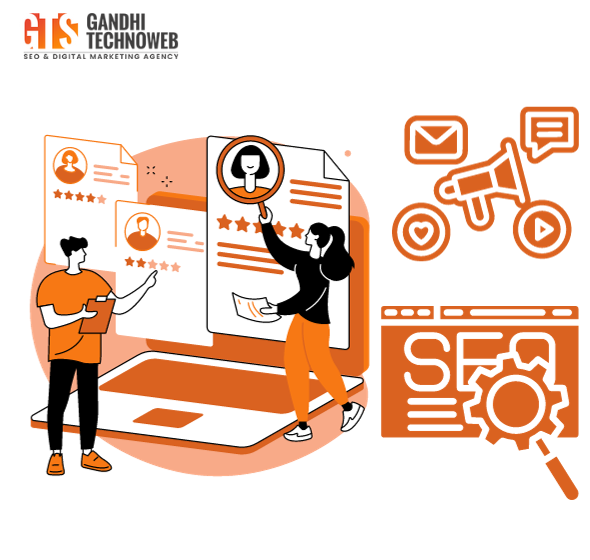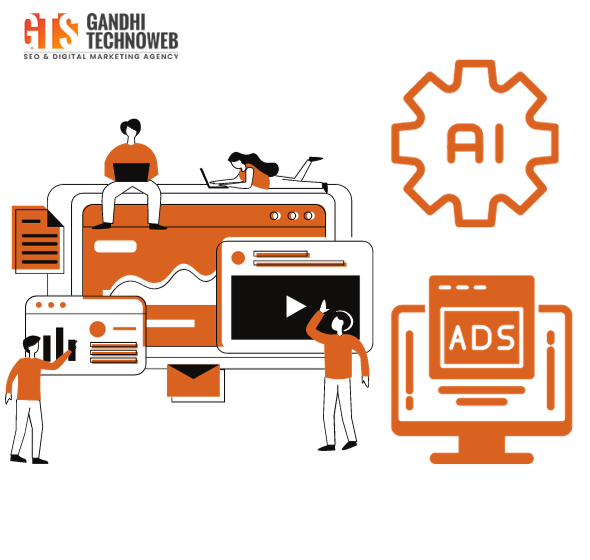Augmented Reality and AI: A Dynamic Duo in Social Media Marketing
- Introduction
- The Rise of Augmented Reality
- The Future of Advertising: AI Takes the Lead
- Personalized Interactions with AI
- The Fusion of AR and AI in Social Media
- Enhanced Product Engagement
- Real-time Analytics for Informed Decisions
- Building Brand Loyalty Through Immersive Experiences
- Real Life Examples
- Conclusion
Introduction:
Augmented Reality (AR) and Artificial Intelligence (AI) have emerged as powerful tools, individually transforming the way brands engage with their audience. However, when combined, they create a dynamic duo that revolutionizes social media marketing in ways previously unimaginable.
The Rise of Augmented Reality:
Augmented Reality has seamlessly integrated the virtual and physical worlds, providing users with immersive experiences. Through the lens of a smartphone or AR glasses, consumers can engage with interactive overlays, turning mundane surroundings into captivating environments. This technology has found a natural home in social media, allowing brands to enhance user experiences and build meaningful connections.

Ready to Transform Your Online Presence? Discover The Leading Digital Marketing Experts!
Supercharge your online business with Gandhi Technoweb Solutions’ remarkable digital marketing specialists! Explore top-of-the-line digital marketing strategies perfectly aligned with your budget.
“AI is not just a technology; it is a game-changer for the advertising industry, enhancing precision and personalization.” – Marketing Innovator
The Future of Advertising: AI Takes the Lead
In recent years, the advertising industry has significantly shifted towards utilizing artificial intelligence (AI) to enhance effectiveness. According to a survey conducted by Spiceworks, almost half of the companies worldwide adopted AI in at least one function of their sales and marketing processes in 2019.
From programmatic advertising and personalized content to chatbots and predictive analytics, AI has taken the lead in transforming the future of advertising.
One of the most significant applications of AI in advertising is programmatic advertising. Programmatic buying is an automated process of purchasing and selling digital ad inventory.
By utilizing machine learning algorithms, programmatic advertising can analyze data in real time to determine which ads would be most relevant for a particular audience. This allows advertisers to target their audience more precisely and efficiently, increasing conversions and higher ROI.
“AR and AI are the new frontier in creating impactful brand experiences.” – Tech Visionary
Personalized Interactions with AI:
Artificial Intelligence, on the other hand, has proven its worth in deciphering vast amounts of data to deliver personalized content. AI algorithms analyze user behavior, preferences, and historical data to tailor marketing messages to individual consumers. This level of personalization enhances user engagement and fosters a sense of connection between the brand and its audience.
The Fusion of AR and AI in Social Media:
When AR and AI join forces, the result is a marketing synergy that transcends traditional boundaries. Imagine a scenario where AI analyzes user preferences and behaviors, allowing AR to create personalized and contextually relevant content. For instance, a user scrolling through their social media feed might encounter an AR ad that dynamically adapts based on their interests and online activities.
Enhanced Product Engagement:
Incorporating AR and AI into social media marketing strategies enables businesses to showcase products in a more engaging manner. AR can bring products to life, allowing users to visualize how they fit into their daily lives. AI algorithms can understand user reactions and adjust the AR experience in real-time, ensuring that the content remains captivating and resonates with the audience.
Real-time Analytics for Informed Decisions:
The marriage of AR and AI doesn’t end with content creation; it extends to analytics as well. Businesses can leverage AI algorithms to analyze the performance of AR campaigns in real-time. This valuable data provides insights into user engagement, preferences, and conversion rates. Armed with this information, marketers can make data-driven decisions, refining their strategies for optimal results.
Building Brand Loyalty Through Immersive Experiences:
By combining AR and AI, brands can create memorable and immersive experiences that leave a lasting impression on consumers. These experiences go beyond traditional marketing methods, fostering a deeper connection and building brand loyalty. As users actively engage with AR-enhanced content tailored by AI, they become more invested in the brand, increasing the likelihood of conversion and long-term loyalty.
|
Aspect |
Current |
Future |
|
AR Integration |
Immersive experiences through smartphones |
AR glasses for more seamless interaction |
|
AI in Advertising |
Programmatic advertising with real-time data |
Advanced AI predicting personalized trends |
|
Personalization with AI |
Tailoring content based on user behavior |
Predictive AI delivering hyper-personalized content |
|
AR and AI Fusion |
AI analyzing user preferences |
AI creating dynamically adapting AR content |
|
Product Engagement |
AR bringing products to life on social media |
AI adjusting AR experiences in real-time |
|
Real-time Analytics |
AI analyzing AR campaign performance |
AI predicting trends and user engagement in real-time |
|
Building Brand Loyalty |
Creating immersive experiences for loyalty |
Predictive AI shaping future loyalty programs |
Real Life Examples:
1. Snapchat’s AR Filters:
Snapchat’s use of AR filters is a prime example of blending augmented reality with real-time engagement. Users can interact with dynamic overlays that respond to facial expressions and movements, creating a personalized and entertaining experience.
2. Spotify’s AI-driven Recommendations:
Spotify employs artificial intelligence to analyze user listening habits and preferences, providing personalized music recommendations. This level of customization enhances user satisfaction and keeps them engaged with the platform.
3. IKEA Place App:
The IKEA Place app utilizes augmented reality to enable users to visualize furniture in their own homes before making a purchase. This immersive experience, powered by AR, assists customers in making informed decisions and increases confidence in their choices.
4. Amazon’s Personalized Recommendations:
Amazon’s recommendation engine, driven by AI algorithms, analyzes user browsing and purchase history to suggest relevant products. This personalized approach enhances the overall shopping experience and contributes to higher conversion rates.

Ready to Dominate Your Online Market? Partner with Our Industry-Leading Digital Marketing Firm!
Boost your online business to new heights with Gandhi Technoweb Solutions’ unparalleled digital marketing masters! Discover cutting-edge digital marketing strategies customized to fit your budget flawlessly.
Conclusion:
The dynamic duo of Augmented Reality and Artificial Intelligence is reshaping the landscape of social media marketing. The integration of these technologies allows brands to deliver personalized, immersive, and interactive content that resonates with users on a profound level. As businesses continue to explore innovative ways to connect with their audience, embracing the synergy of AR and AI is no longer a choice but a strategic imperative in the competitive world of digital marketing.









